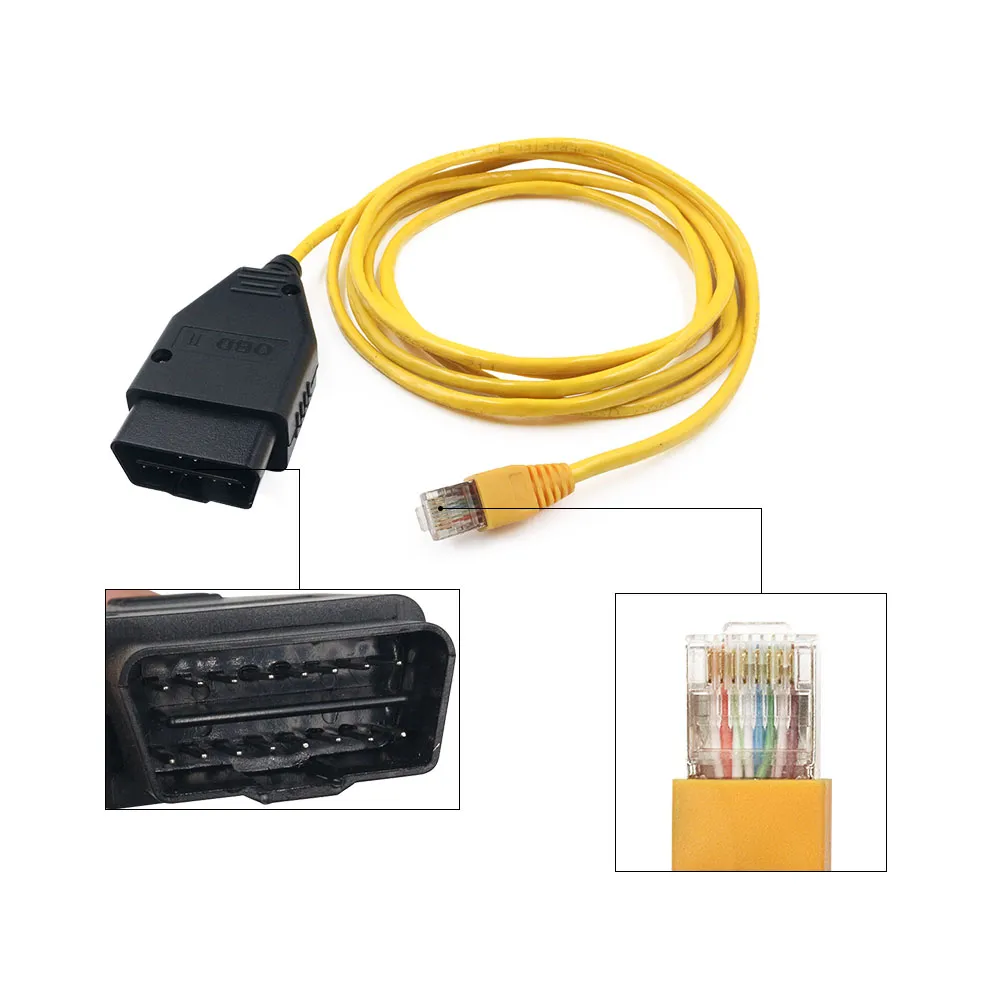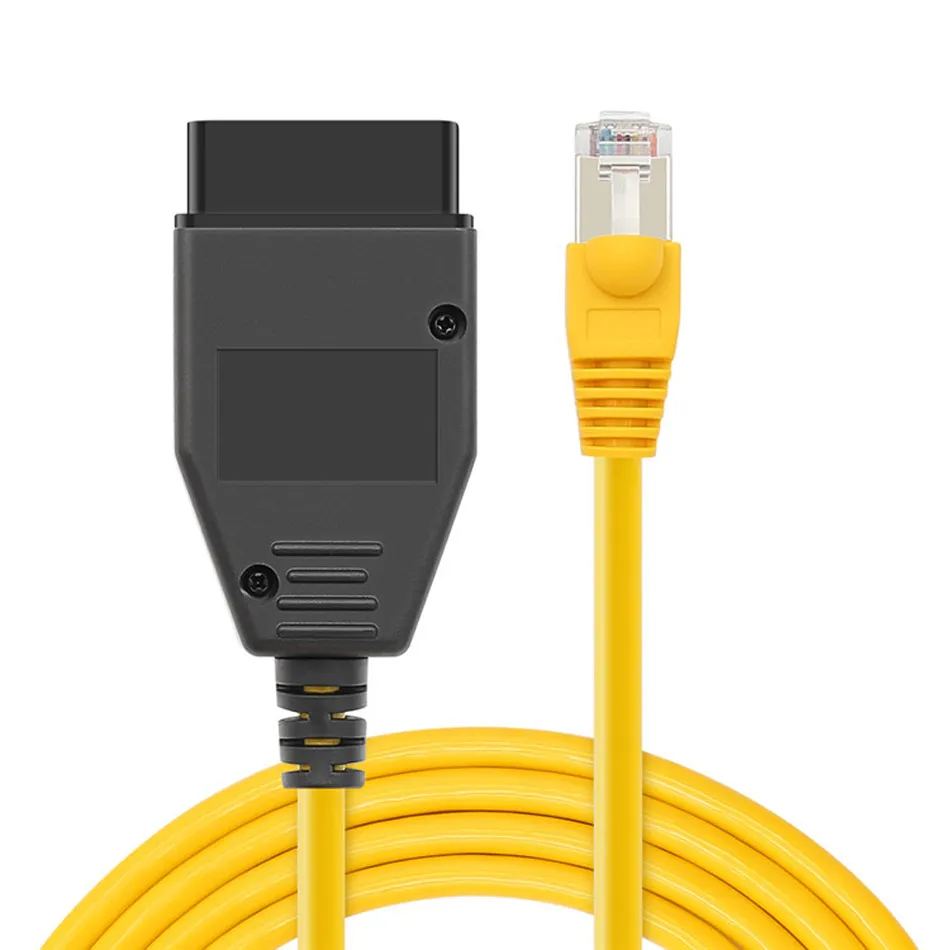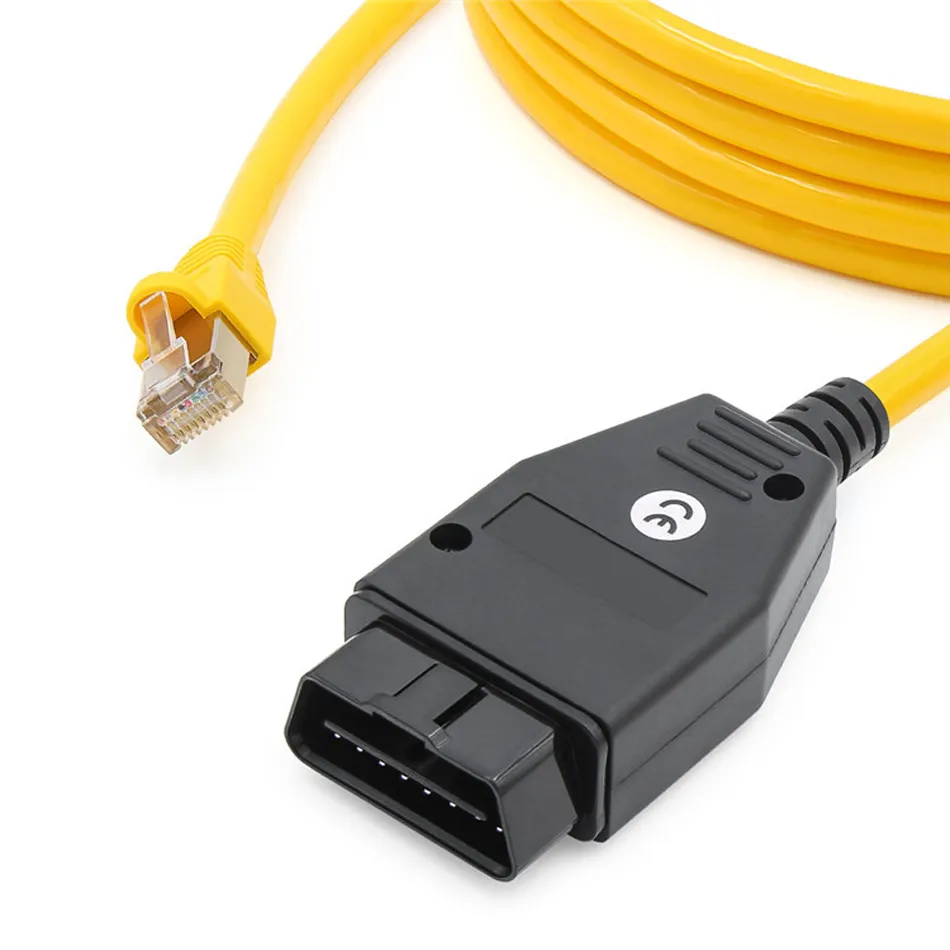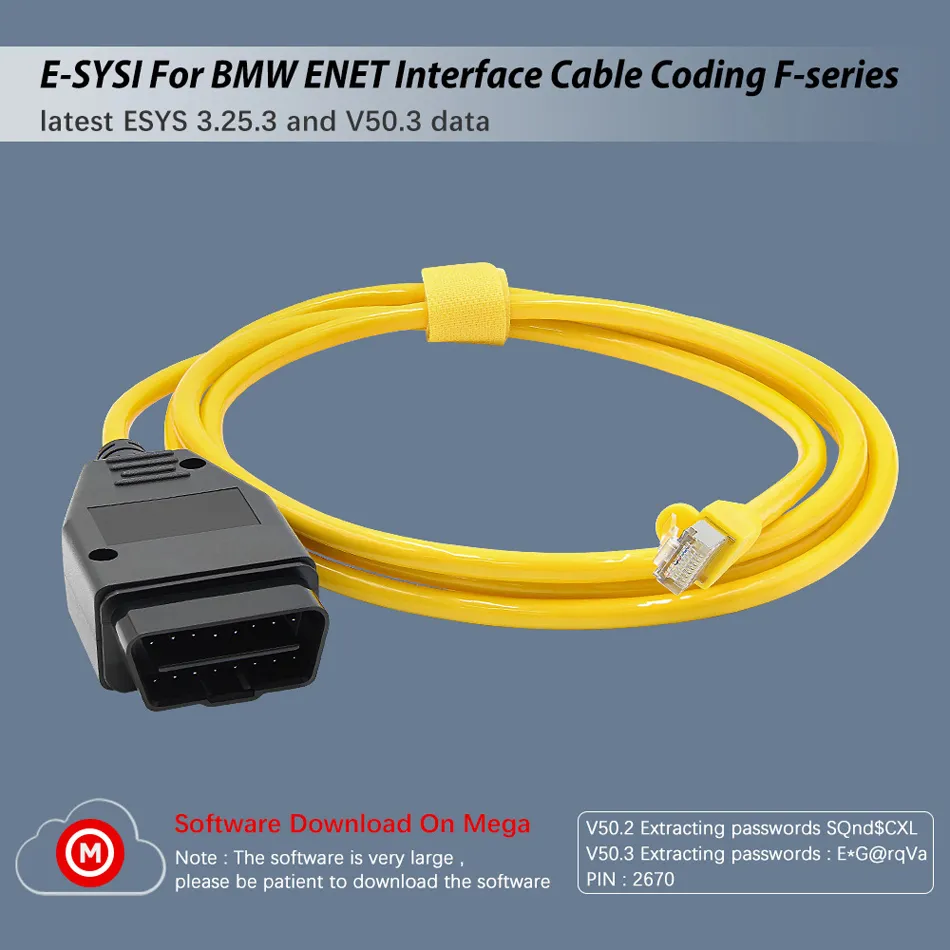Car maintenance can be a daunting task, especially when it comes to diagnostics. Accurate data transfer is crucial in identifying car issues and BMW diagnostics can help with that. Enter the ENET cable – a tool that can aid in faster and more accurate data transfer for BMW diagnostics. This article explains what an ENET cable is, its benefits, and how to use it for BMW diagnostics. It also includes tips and tricks on efficient use of the cable. The article also discusses the compatibility of ENET cable with various BMW models and provides a step-by-step guide on using it for diagnostics. Overall, if you’re a BMW owner looking to make diagnostics easier and more efficient, the ENET cable might just be the solution you need.









Introduction to BMW diagnostics and the importance of accurate data transfer
One of the main benefits of BMW diagnostics is its ability to detect potential problems before they develop into serious issues. This early warning system allows car owners to schedule preventative maintenance, ensuring their cars are always in top condition. Additionally, by identifying problems early on, mechanics can address them before they cause more extensive damage, saving BMW owners both time and money in the long run.
The importance of accurate data transfer cannot be overstated when it comes to BMW diagnostics. The diagnostic process relies heavily on the data collected from the car’s various sensors and electronic control modules. This information is then analyzed by sophisticated software designed to interpret the data accurately. Any errors or inaccuracies in the data can lead to incorrect diagnoses, causing wasted time and resources.
Furthermore, inaccurate data transfer can also result in unnecessary repairs or replacements, further increasing the cost of servicing a BMW. For this reason, it is essential to ensure that the diagnostic equipment used is of high quality, and the technicians conducting the diagnosis possess the necessary skills and expertise to interpret the data accurately.
Explanation of ENET cable and its benefits for BMW diagnostics
When it comes to performing diagnostics on a BMW vehicle, there are various tools available in the market. One of the most popular and reliable options is the ENET cable. This article will provide an explanation of this cable and highlight its benefits for BMW diagnostics.
The ENET cable is a diagnostic tool that connects a BMW vehicle’s OBD port to a computer or other electronic device. This tool uses Ethernet technology to transfer data between the vehicle and the device. The ENET cable is compatible with all BMW models manufactured since 2004 and can be used on both petrol and diesel engines.
The ENET cable works by accessing the vehicle’s control units, which are responsible for various systems such as the engine, transmission, and airbag. Once connected, the ENET cable can read data from these control units and display it on the device being used for diagnostics. The cable also allows for the modification of certain settings in the control units, making it a useful tool for tuning and customization.
Now let’s take a look at the benefits of using an ENET cable for BMW diagnostics. Firstly, the ENET cable offers faster data transfer speeds compared to other diagnostic tools. This is because the cable uses Ethernet technology, which allows for high-speed data transfer between the vehicle and the device. This makes diagnosing issues much quicker and easier to do.
Another benefit of using the ENET cable for BMW diagnostics is more accurate data transfer. Due to its high-speed data transfer capabilities, the cable can transfer large amounts of data without any loss or corruption. This ensures that the data displayed on the device is accurate and up-to-date, making it easier to identify issues and make necessary repairs.
The ENET cable is also cost-effective compared to other diagnostic tools in the market. Many automotive diagnostic tools are expensive and have limited compatibility with different vehicle models. However, the ENET cable is inexpensive and can be used on all BMW models manufactured since 2004, making it a versatile and affordable option for BMW owners and mechanics alike.
Compatibility of ENET cable with BMW models
– Tips for purchasing a high-quality ENET cable
As the world becomes increasingly reliant on technology, it’s important to have access to reliable and efficient tools that can help us navigate our daily lives. For those who own a BMW model, having the right cable is crucial in order to keep your car running smoothly. In this article, we’ll discuss the compatibility of the ENET cable with various BMW models, how to check if your BMW model is compatible, the benefits of using an ENET cable, and tips for purchasing a high-quality cable.
Firstly, let’s talk about the compatibility of ENET cables with BMW models. ENET cables are designed specifically to work with BMW models that have Ethernet ports built into them. These ports allow you to connect your car to your computer and access various settings and features. The good news is that most BMW models produced since 2012 come equipped with Ethernet ports, so chances are, your car is compatible with an ENET cable.
Next, let’s discuss how to check if your BMW model is compatible with an ENET cable. You can do this by checking the owner’s manual or contacting your local BMW dealership for more information. Alternatively, you can search online for compatibility lists or use diagnostic software to check if your car has an Ethernet port.
So, what are the benefits of using an ENET cable for your BMW model? One major advantage is that you can access a wide range of settings and features that may not be available through the normal interface. For example, you can code your car’s settings to your specific preferences, diagnose issues and perform maintenance tasks, and even upgrade software and firmware. This gives you more control over your car’s performance and can save you time and money in the long run.
However, it’s important to note that not all ENET cables are created equal. When shopping for a cable, it’s crucial to choose a high-quality option that’s durable and reliable. Look for cables that are made from high-quality materials and have a solid build construction. Additionally, make sure to purchase from a reputable seller that offers customer support and a warranty.
How to use ENET cable for BMW diagnostics
The ENET cable is a specialized tool that provides a direct connection between your BMW’s OBD-II port and your computer. This allows you to access and analyze the data from your car’s various sensors and systems, giving you the information you need to identify and fix any issues that may be present.
So, how do you use the ENET cable for BMW diagnostics? Here is a step-by-step guide:
Step 1: Install the required software
To start with, you will need to install the software required to connect your computer to your BMW using the ENET cable. The most popular software for doing this is called INPA, and it is readily available online. Once downloaded, follow the installation instructions carefully.
Step 2: Connect the ENET cable to your car
Next, locate your BMW’s OBD-II port – this is usually located under the dashboard near the steering wheel. Plug one end of the ENET cable into this port and the other end into your computer’s Ethernet port.
Step 3: Launch the software
With the cable connected and the software installed, launch the INPA software on your computer. This should automatically detect the connection to your BMW.
Step 4: Diagnose your BMW
Once the software is up and running, you can begin to diagnose your car. You can use INPA to read out error codes, view live sensor data, and perform various other diagnostic functions. With this information, you should be able to identify any issues with your vehicle and take the necessary steps to fix them.
Now that you know how to use the ENET cable for BMW diagnostics, here are some tips and tricks for making the most of this powerful tool:
Tip 1: Keep your software up-to-date
Software updates are essential for keeping your diagnostic tools functioning properly and ensuring that they are compatible with the latest BMW models. Make sure to regularly check for and install any updates to your diagnostic software.
Tip 2: Learn the ins and outs of your car’s systems
To get the most value out of your ENET cable, you need to have a solid understanding of your car’s various systems and components. Take the time to learn about your engine, transmission, brakes, and other key elements, and how they work together to keep your BMW running smoothly.
Tip 3: Practice makes perfect
Like any skill, using the ENET cable for BMW diagnostics takes practice. Spend time familiarizing yourself with the software and your car’s systems, and don’t be afraid to experiment with different diagnostic methods until you find what works best for you.
Conclusion and final thoughts on ENET cable for BMW diagnostics
One of the main benefits of using an ENET cable for BMW diagnostics is its compatibility with a wide range of BMW models. From older models to newer ones, ENET cables can be used on almost any BMW vehicle. This makes them a versatile tool for any BMW owner or mechanic.
Another benefit of ENET cables is their ability to read and clear fault codes quickly. With traditional diagnostic tools, it can take hours to diagnose a problem with a BMW. However, with an ENET cable, the process is much faster and more efficient, allowing you to get your BMW back on the road sooner.
In addition, ENET cables can also perform coding and programming functions on your BMW. Whether you need to update your software, retrofit new features, or change settings, an ENET cable can help you accomplish these tasks quickly and easily.
Overall, using an ENET cable for BMW diagnostics is a smart investment for any BMW owner or mechanic. Not only do they offer compatibility with a wide range of BMW models, but they also provide fast and reliable diagnostic readings, as well as the ability to perform coding and programming functions.
In conclusion, the ENET cable is a valuable tool that can make BMW diagnostics easier and more efficient. Its versatility and ability to perform multiple functions make it an essential piece of equipment for anyone who works on BMW vehicles. If you are in the market for an ENET cable, be sure to choose a high-quality product that will provide accurate readings and withstand frequent use.
FAQ
Q1. What is an ENET cable and how does it make BMW diagnostics more efficient?
– An ENET cable is a specialized cable used for connecting a BMW vehicle to a computer or diagnostic tool. It allows for fast and accurate data transfer, enabling technicians to quickly and accurately diagnose any issues with the vehicle’s systems. The cable is designed to work specifically with BMW vehicles, making it highly compatible and reliable for diagnostics.
Q2. What are the advantages of using an ENET cable for BMW diagnostics?
– Using an ENET cable for BMW diagnostics provides several advantages. Firstly, it allows for faster data transfer, enabling technicians to quickly access and analyze the vehicle’s systems. This can lead to faster diagnosis and repair times, ultimately saving both time and money for the vehicle owner. Additionally, the wide compatibility of the ENET cable ensures that it can be used with a variety of BMW models, making it a versatile and cost-effective tool for diagnostics.
Q3. How easy is it to use an ENET cable for BMW diagnostics?
– Using an ENET cable for BMW diagnostics is relatively simple and straightforward. The cable is designed to be plug-and-play, meaning it can be easily connected to the vehicle’s OBD-II port and a computer or diagnostic tool. Once connected, the cable enables fast and accurate data transfer, providing technicians with the information they need to diagnose any issues with the vehicle’s systems. Overall, the ease of use and wide compatibility of the ENET cable make it a convenient and efficient tool for BMW diagnostics.
Q4. Can an ENET cable be used for other makes and models of vehicles?
– While the ENET cable is specifically designed for use with BMW vehicles, it may also be compatible with other makes and models that use similar OBD-II ports and diagnostic protocols. However, it is important to note that the cable is primarily intended for use with BMW vehicles and may not be fully compatible with other makes and models. It is recommended to consult with the manufacturer or a professional technician to determine if the ENET cable is suitable for use with a specific vehicle.